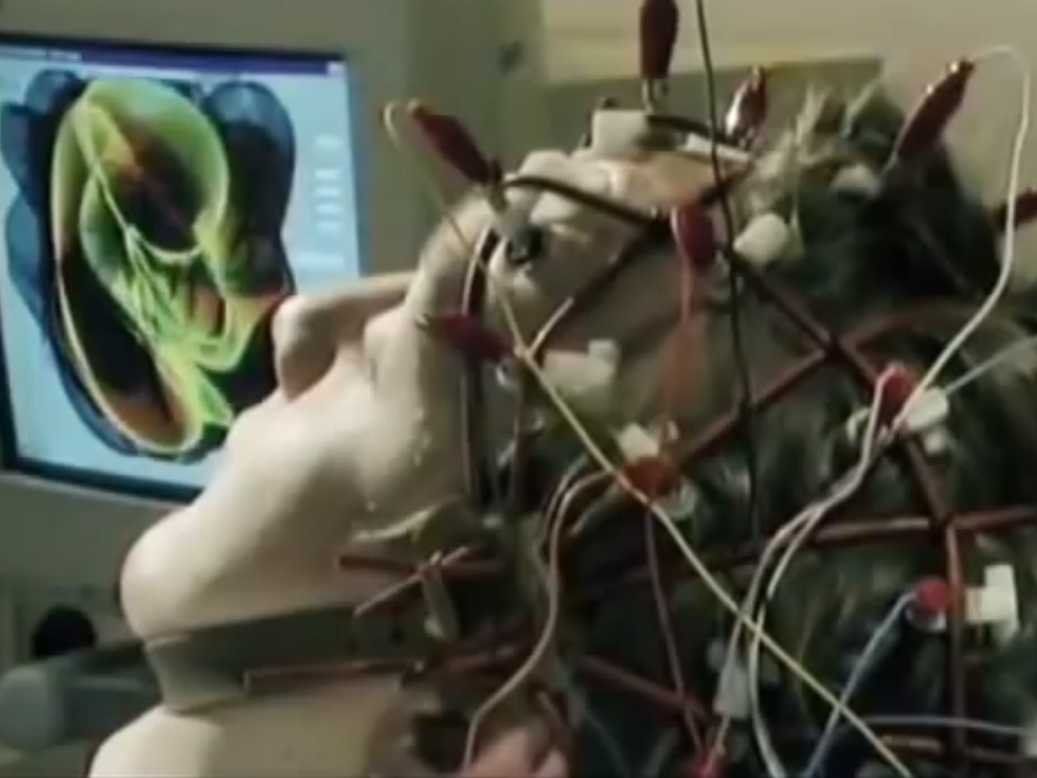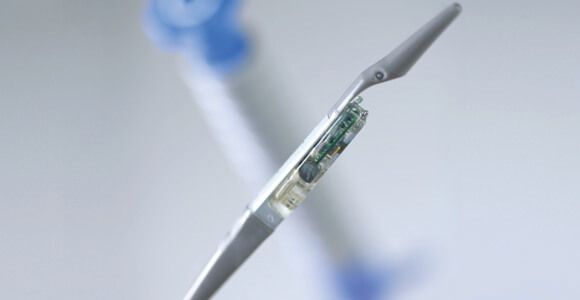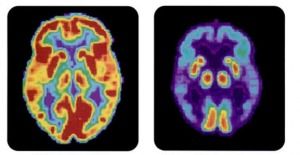Page 12083
Dylan Love, provided by Business Insider

This is spooky stuff, but it’s real and it’s already happening.
Humans are augmenting themselves with computers and technology that will expand their abilities, and it’s going to get more advanced and morally complex as time passes.
Imagine transplanting your entire consciousness into a computer. That’s a new type of immortality. Imagine having a robotic exoskeleton that’s not just part of your body — it is your body. That’s a new type of existence entirely.
Dec 27, 2013
Drug Hopes to Delay Onset of Alzheimer’s Symptoms With a Monthly Shot in the Arm
Posted by Seb in category: biotech/medical
Alzheimer’s disease is on the rise, even as doctors continue to struggle to find potential treatments for it. Researchers expect the number of those suffering from dementia to grow from 44 million at present to three times that by 2050.
The growing number puts increased pressure on researchers to do something to ameliorate the disease. And one drug is attracting the spotlight as it enters clinical trials. Eric Karran, the director of research at Alzheimer’s Research UK, said in a press conference in the lead-up to a G8 summit on dementia that he is “full of hope” that a drug now being tested in the United States on patients with mild dementia may be to Alzheimer’s disease what statins are to heart disease.
Dec 27, 2013
Will NYC Get Its First Bitcoin ATM in 2014?
Posted by Seb in categories: bitcoin, business
Dec 26, 2013
Using Pigeons to Avoid Government Surveillance: Not as Crazy as It Sounds
Posted by Seb in category: surveillance
Rex Troumbley — Slate

This essay originally appeared in Internet Monitor 2013: Reflections on the Digital World, published by the Internet Monitor project at Harvard’s Berkman Center for Internet & Society. It is licensed under a Creative Commons Attribution 3.0 Unported license and has been lightly edited to align with Slate’s style guide.
On June 30, 2013, prompted by revelations of surveillance programs in the United States and United Kingdom, former Union of International Associations Assistant Secretary-General Anthony Judge published a detailed proposal titled “Circumventing Invasive Internet Surveillance With Carrier Pigeons.” In it, Judge discusses the proven competence of carrier pigeons for delivering messages, their non-military and military messaging capacity, and Chinese experiments to create pigeon cyborgs. Judge acknowledges that pigeon networks have their own vulnerability (such as disease, hawks, or being lured off course by sexy decoys), but argues that others have proven pigeons are effective at transmitting digital data.
Dec 26, 2013
Bitcoin paradise
Posted by Seb in categories: bitcoin, economics, geopolitics, government, human trajectories
by J.M.P. — The Economist

A GROUP of self-described anarchists, libertarians and Ron Paul supporters fleeing the crumbling world economic system have founded Galt’s Gulch, a community in Chile inspired by Ayn Rand’s “Atlas Shrugged”—and with an economy based entirely on Bitcoin. Or that’s the goal, anyway.
“Our farm workers and suppliers still want to get paid in pesos,” Ken Johnson, the project’s founder and managing partner, explains. “But Bitcoin as the John Galt coin? Why shouldn’t it be?”
Dec 26, 2013
The fork on the road for Homo Futura
Posted by Steve Fuller in categories: biological, ethics, evolution, futurism, genetics, homo sapiens, philosophy, posthumanism, science, transhumanism
 To think about the existential prospects that lie ahead for Humanity 2.0, or Homo futura, imagine yourself in 1900 faced with two investment opportunities for the future of personal human transport: on the one hand, a specially bred – that is, genetically modified – horse; on the other, a mass-produced automobile. Which prospect would you pursue?
To think about the existential prospects that lie ahead for Humanity 2.0, or Homo futura, imagine yourself in 1900 faced with two investment opportunities for the future of personal human transport: on the one hand, a specially bred – that is, genetically modified – horse; on the other, a mass-produced automobile. Which prospect would you pursue?
The horse has been long a reliable mode of transport, whose strengths and weaknesses are well known. A faster horse may require greater skill to handle and more feed that produces more manure. But your society is already equipped to deal with those consequences. In contrast, the automobile is a new technology, albeit one that has already shown that it can equal and even surpass the horse in terms of speed and durability under a variety of conditions. However, the automobile brings its own distinctive cost-benefit calculus, as its future improvement would very likely involve both greater enclosure of the traveller and greater pollution of the environment. In the long term, the traveller’s relationship to nature would probably need to change quite drastically for the automobile to become dominant.
It is too bad that the state of genetic knowledge was not sufficiently advanced in 1900 to turn this into a real choice. Instead the horse easily appeared a less attractive long-term bet, as it was generally presumed that the upper limits of the creature’s performance had been already reached. In that case, the indefinite continuation of horse-drawn personal transport could only be defended by those who had a principled objection to mechanical transport, a position perhaps grounded in a nostalgic view of humanity’s oneness with nature. But even these people could not deny the proven effectiveness of ships and trains as machines of mass conveyance. In short, the horse was doomed. The market for personal transport underwent what Joseph Schumpeter called ‘creative destruction’. Henry Ford effectively made it worthwhile for consumers to reorganize their value priorities in a way that quickly resulted in the automobile, rather than the horse, setting the standard of personal transport.
The twenty-first century may offer us a choice rather like that of our hypothetical 1900 decision between horse and car. But now the choice would be between two different ways of continuing the human condition – alternative vehicles, as it were, to convey our existence. One involves genetically modifying ourselves and the other involves transcending the bodies of our birth altogether. These two options represent the two rather opposing directions in which contemporary transhumanism is heading.
Dec 26, 2013
The first 3D printed organ — a liver — is expected in 2014
Posted by Seb in categories: 3D printing, bioprinting, biotech/medical, human trajectories, life extension
By Lucas Mearian — Computerworld
Computerworld - Approximately 18 people die every day waiting for an organ transplant. But that may change someday sooner than you think — thanks to 3D printing.
Advances in the 3D printing of human tissue have moved fast enough that San Diego-based bio-printing company Organovo now expects to unveil the world’s first printed organ — a human liver — next year.
Like other forms of 3D printing, bio-printing lays down layer after layer of material — in this case, live cells — to form a solid physical entity — in this case, human tissue. The major stumbling block in creating tissue continues to be manufacturing the vascular system needed to provide it with life-sustaining oxygen and nutrients.
Dec 25, 2013
Edible Batteries Could Power Smart Pills and Medical Devices
Posted by Seb in category: biotech/medical
Written By: Cameron Scott — Singularity Hub

Medicine is more an art than a science, doctors are the first to admit, not just because so much remains unknown about the human body, but also because patients often fail to provide relevant details or follow the doctor’s orders. Which explains the strong appeal of digitizing pills so that they register when the patient takes them and including Internet-enabled medical sensors in medical devices.
But how can we safely power electronic technology inside the body? A number of researchers are aggressively seeking answers to that question. For instance, Singularity Hub has covered an electronic pill that, when activated by stomach acid, generates enough power to signal an external device that then registers that the pill has been taken.
Continue reading “Edible Batteries Could Power Smart Pills and Medical Devices” »
Dec 25, 2013
AI Day Will Replace Christmas as the Most Important Holiday in Less Than 25 Years
Posted by Seb in categories: human trajectories, posthumanism, robotics/AI, singularity
 Zoltan Istvan — Huffington Post Visionary; Philosopher; Author of bestselling novel ‘The Transhumanist Wager’
Zoltan Istvan — Huffington Post Visionary; Philosopher; Author of bestselling novel ‘The Transhumanist Wager’
For a few billion people around the world, Christmas is the most important and relished holiday of the year. It’s the day with the most gift-giving, the most family get-togethers, the most religious activities, and the most colorful fairy tales that children and adults almost universally embrace with sacred fervor. For many nations, no other day comes close to being as special. For this reason, it seems almost unimaginable that another day — especially an unknown one looming on the horizon — will soon unseat Christmas as the most important day in the world. Nonetheless, for humanity, the course is set. The birth of an artificial intelligence equal or greater than that of human intelligence is coming. It’s called AI Day. And once it arrives, it will rapidly usher in a new age.
For decades, the concept of a man-made intelligence matching or surpassing our own — technically called AGI (artificial general intelligence) or Strong AI — has been steeped in science fiction. Upon hearing the term AI, many people immediately think of the sentient computer HAL in Stanley Kubrick’s masterpiece film 2001: A Space Odyssey. However, what most people fail to grasp is that once AI becomes self-aware and joins with the internet, it could grow its intelligence thousands of times in just mere days, perhaps hours. Frankly, it could quickly surpass all measurements of intelligence that humans are even capable of monitoring and recognizing.
“I think that Ray Kurzweil’s estimate that we will achieve human-level Artificial General Intelligence by around 2029 is a reasonable guesstimate,” says Dr. Ben Goertzel.









